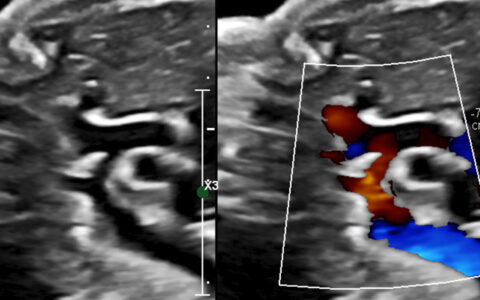Physician-researchers at Monroe Carell Jr. Children’s Hospital at Vanderbilt are working to improve risk prediction and therapies in patients with congenital heart disease by elucidating individual clinical characteristics.
Decades of broad surgical advancements for children with congenital heart disease have led patients to thrive through childhood and into adulthood. Having a knowledge base for applying the best treatment for individual children or subgroups is the next step forward, according to Sudeep Sunthankar, M.D., MSCI, Sara Van Driest, M.D., Ph.D., and Prince Kannankeril, M.D., MSC., key players in these efforts at Vanderbilt.
“Our research strives to bridge the knowledge gap between different subpopulations or individuals so we can provide personalized care for our patients and improve outcomes,” Sunthankar said. “We are looking for genetic variations which, for example, may make one patient more likely than another patient to have a side effect while on medication.”
Propafenone’s Downside
Children who have surgery for congenital heart disease often have some sort of abnormal heart rhythm problem in the postoperative period, with many experiencing tachycardia. Propafenone is a commonly used medication to treat these arrhythmias.
Anecdotally, Sunthankar and Kannankeril became aware of adverse events from propafenone, including a prolonged QT interval, prolonged QRS duration, potential heart block, and bradycardia, as well as systemic reactions including nausea, a metallic taste in the mouth, headache and fatigue.
“Anywhere from 5 to 25 percent of adults or children taking propafenone will have some gastrointestinal, neurological or cardiac side effect or adverse event,” Kannankeril said. “This is true of people with structurally normal hearts, as well.”
Root Cause Confirmed in Children
Through an earlier study, other researchers demonstrated that peak propafenone concentrations in adults are higher when genetic variants that result in poor function of CYP2D6, a pharmacogene involved in metabolizing propafenone and other drugs, are also present. The investigators suspected that higher peak concentrations could result in more adverse events.
The Monroe Carell team conducted a retrospective study of data from EHRs and Vanderbilt’s biobank, BioVU, looking at 76 pediatric and young-adult patients, including 45 with congenital heart disease. All had taken propafenone for their arrhythmia. The team focused on the relationship between each patient’s CYP2D6 genetic activity score and the adverse events they experienced.
“Those with abnormal CYP2D6 activity may be at slightly higher risk for adverse events.”
Thirty-eight percent of the patients had an adverse event, with those with lower CYP2D6 activity scores having significantly more total adverse events. The researchers also found that older age when starting on propafenone raised these odds.
“This isn’t empirically saying that we should avoid putting patients on propafenone, but it can raise clinician awareness that those with abnormal CYP2D6 activity may be at slightly higher risk for adverse events. We will need to study this in larger patient groups, but this provides some interesting foundational knowledge,” Kannankeril said.
Single Ventricle Studies
While the genetic study included 21 single ventricle patients, Sunthankar was first author on another study to identify predictors of mortality in a specific subpopulation of such children: babies with hypoplastic left heart syndrome (HLHS).
“Our goal was to understand what clinical and operative features can predict survival in this vulnerable population,” Sunthankar said.
The research centered on how risk could be mitigated in the precarious period between the first stage (Norwood) procedure and the second stage (Glenn) procedure. To explore this, the team looked at outcomes data from 3,267 patients at 67 centers, using machine learning to complement traditional logistic regression analysis.
They found that digoxin use at discharge was the most influential factor in lowering risk of interstage mortality. Additionally, the use of the Sano conduit rather than the Blalock-Taussig-Thomas shunt in stage I repair was associated with lower risk.
“We used a multicenter registry, so we hope pediatric cardiologists across the country will be able to extrapolate from these findings to find ways to improve care at their own institutions,” Sunthankar said.
Genetics of Ventricular Function
Sunthankar is planning another study investigating genetic causes of poor ventricular function following the Norwood procedure.
Genetic variants in MYH6, which encodes the cardiac alpha-myosin heavy chain, are associated with cardiomyopathy, Sunthankar explains. A previous study showed that variants in this gene are more common in HLHS than in a matched population.
He plans to sequence all known cardiomyopathy genes in a group of patients with HLHS to learn which variants in these genes are associated with decreased heart function.
“There are a lot of factors that contribute to survival outcomes in patients with hypoplastic left heart syndrome. We want to understand how a patient’s genetic makeup may contribute to this, so that closer monitoring or earlier intervention can be provided,” he said.
“We know every patient is unique, and our goal is to understand how that uniqueness should impact their care.”





